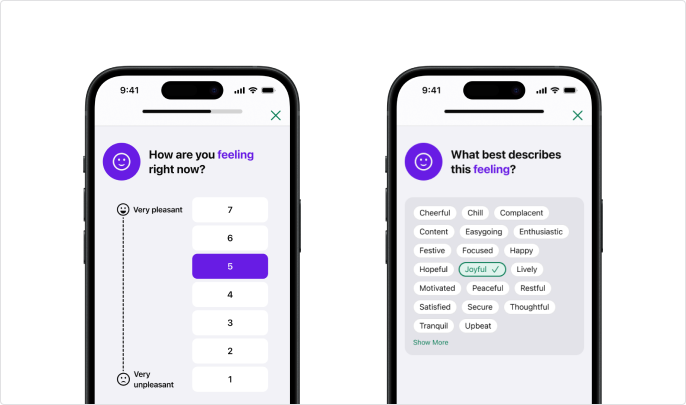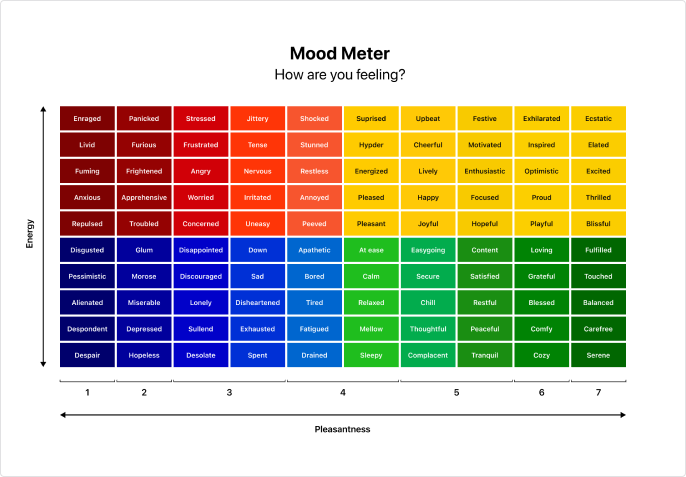Mood Reflection

Overview
Grow awareness by logging your mood twice daily. ESNTL provides a scale-based mood entry followed by a corresponding qualitative inquiry to narrow in on the name of the dominant emotion at that moment in your day.
The Mood Quality question asks, “How are you feeling right now?”. Respond to this question by selecting your level of pleasantness on a scale of 1-7.
The Mood Feeling question asks, “What best describes this feeling?”. Respond to this question by selecting from a list of words to describe your mood. The options displayed will change based on your answer to the Mood Quality question.
Benefit
Logging your mood allows you to build awareness around your feelings and connect them to patterns in your behaviors. Over time, you will develop a greater connection to your emotions and an understanding of the patterns that help or hinder your mental wellness.
Research
The options displayed in the Mood Feeling question are based on the Yale Mood Meter. Marc Brackett, Ph.D., founding director of the Yale Center for Emotional Intelligence and a professor in the Yale Child Study Center, introduced the Mood Meter in 2005 to help recognize and understand our emotions.

The Mood Meter defines emotions as having two dimensions, pleasantness and energy. On the Mood Meter, the horizontal or x-axis is pleasantness and the y-axis is energy. The two axes cross to form four quadrants, and each has a color. The red quadrant is for unpleasant, high-energy emotions, feelings like anxiety, rage, frustration, anger, and fear. The blue quadrant is for unpleasant, low-energy feelings like disappointment, sadness, discouragement, hopelessness, and loneliness. The green quadrant is for pleasant, low-energy feelings like calm, relaxation, serenity, contentment, and balance. The yellow quadrant is for pleasant, high-energy feelings like joy, excitement, enthusiasm, elation, and empowerment.
Based on your response to the mood quality question (1-7), ESNTL presents the emotions from that section of the Mood Meter.
How to use
Start Your Day check-in
- Begin the Start Your Day check-in.
- Progress through the check-in to the Mood Quality question.
- You will be prompted to answer “How are you feeling right now?”
- You will be prompted to answer “What best describes this feeling?”
End Your Day check-in
- Begin the End Your Day check-in.
- Progress through the check-in to the Mood Quality question.
- You will be prompted to answer “How are you feeling right now?”
- You will be prompted to answer “What best describes this feeling?”